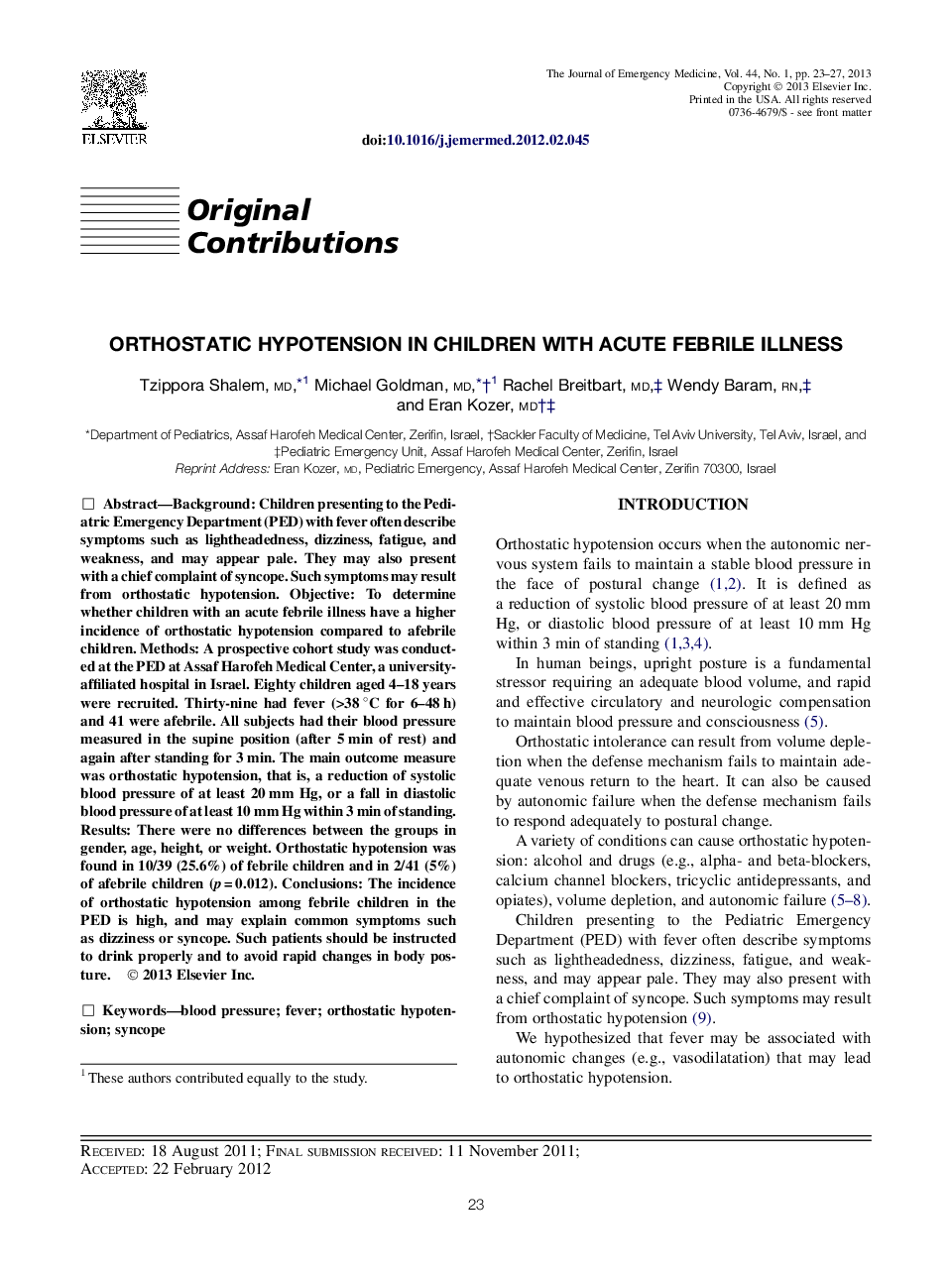| Article ID | Journal | Published Year | Pages | File Type |
|---|---|---|---|---|
| 3248666 | The Journal of Emergency Medicine | 2013 | 5 Pages |
BackgroundChildren presenting to the Pediatric Emergency Department (PED) with fever often describe symptoms such as lightheadedness, dizziness, fatigue, and weakness, and may appear pale. They may also present with a chief complaint of syncope. Such symptoms may result from orthostatic hypotension.ObjectiveTo determine whether children with an acute febrile illness have a higher incidence of orthostatic hypotension compared to afebrile children.MethodsA prospective cohort study was conducted at the PED at Assaf Harofeh Medical Center, a university-affiliated hospital in Israel. Eighty children aged 4–18 years were recruited. Thirty-nine had fever (>38 °C for 6–48 h) and 41 were afebrile. All subjects had their blood pressure measured in the supine position (after 5 min of rest) and again after standing for 3 min. The main outcome measure was orthostatic hypotension, that is, a reduction of systolic blood pressure of at least 20 mm Hg, or a fall in diastolic blood pressure of at least 10 mm Hg within 3 min of standing.ResultsThere were no differences between the groups in gender, age, height, or weight. Orthostatic hypotension was found in 10/39 (25.6%) of febrile children and in 2/41 (5%) of afebrile children (p = 0.012).ConclusionsThe incidence of orthostatic hypotension among febrile children in the PED is high, and may explain common symptoms such as dizziness or syncope. Such patients should be instructed to drink properly and to avoid rapid changes in body posture.
